
In an old (1938) issue of
Modern Mechanix, we read how an unnamed "French engineer" once proposed, "as a solution to the problem of locating an airport in the heart of any big city, a design for a long orientable runway, which would be mounted on circular tracks atop tall buildings." This megalithic, concrete, aerospatial earth machine would "orient" itself along specific air routes, hurling planes aloft over the rooftops of the city.
Though
Modern Mechanix tags the idea with both "aviation" and "impractical," clearly the editors have not read this fascinatingly absurd, and much less practical,
conspiracy theory about Denver International Airport.
"What on earth is going on at Denver International Airport?" the website asks. "Or should we be asking what is going on UNDERGROUND there?" According to the conspiracist's own "guerrilla" reportage:
• The Queen of England has reportedly been buying up property in Colorado under a proxy.
• There is a lot of "secret society" symbology at the airport, an AWFUL lot in fact
• The symbolism apparent in the layout of the new Denver airport, some feel, says that it may be a control center for world control
And so on. Apparently some of the airport's murals are a bit dodgy – and that can only mean one thing... An AWFUL lot of one thing, in fact.
In any case, another (much more fascinating) article about urban airports of the future came out last month in
Fast Company. There we read about the "rise of the aerotropolis":
In the relatively obscure world of urban planning, [John] Kasarda, a professor at the University of North Carolina's Kenan-Flagler Business School, has made a name for himself over the past decade with his radical (some might say bone-chilling) vision of the future: Rather than banish airports to the edges of cities and then do our best to avoid them, he argues, we should move them to the center and build our cities around them.
 [Image: The neolithic geometry of Dallas-Fort Worth International Airport, a future archaeological complex which "occupies more surface area than the entire island of Manhattan." Image courtesy of NASA's Earth Observatory].
[Image: The neolithic geometry of Dallas-Fort Worth International Airport, a future archaeological complex which "occupies more surface area than the entire island of Manhattan." Image courtesy of NASA's Earth Observatory].Kasarda points out that an "invisible plexus of air-cargo networks" allows globalization to function. This is
space as re-defined by corporate proximity, international accessibility, and cargo transport logistics:
Over the past 30 years, Kasarda will tell you, global GDP has risen 154%, and the value of world trade has grown 355%. But the value of air cargo has climbed an astonishing 1,395%. Today, 40% of the total economic value of all goods produced in the world, barely comprising 1% of the total weight, is shipped by air (and that goes for more than 50% of total U.S. exports, which are valued at $554 billion). Raw materials and bulkier stuff still take the slow boats, but virtually everything we associate with our postindustrial, value-added economy – microelectronics, pharmaceuticals, medical devices, Louis Vuitton handbags, sushi-grade tuna – travels via jumbo jet. We may think of the 1960s as the jet-set era, but the supremacy of (soft) airpower has only now begun to reshape our ideas about how cities should look, how they should function.
On the other hand, no mention of
climate change – let alone air pollution, or the
rising cost of jet fuel – is to be found.
Instead, we read,
Hong Kong is now "premising its entire world-trade strategy on the primacy of the airport." Indeed, there is already "a mini-city stationed on a nearby island for [the airport's] 45,000 workers" – not to mention
SkyCity, "a complex of office towers, convention centers, and hotels" for visiting CEOs and their consultant-class co-travelers.
In Beijing, "construction has begun on Beijing Capital Airport City, a $12 billion master-planned city of 400,000, and a massive airport expansion is coming to the city of Guangzhou, in the Pearl River Delta. Thirty-three miles to the south of Seoul,
New Songdo City, billed as the most ambitious privately financed project in history, is taking shape in the Yellow Sea: The metropolis of 350,000 people, many of them expatriates living and working on-site for multinationals, is being built on a man-made peninsula the size of Boston."


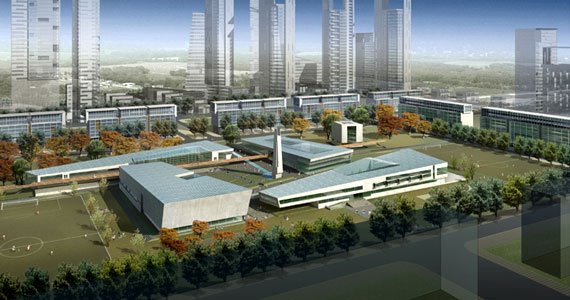 [Images: New Songdo City; courtesy Kohn Pederson Fox. New Songdo City was covered a long time ago on BLDGBLOG at the very end of this post].
[Images: New Songdo City; courtesy Kohn Pederson Fox. New Songdo City was covered a long time ago on BLDGBLOG at the very end of this post].Dubai, Frankfurt, Amsterdam, Suvarnabhumi – the latter an airport-city in Thailand "slated to become a self-contained province governed by the prime minister himself" – everywhere, we're led to believe, will soon turn in to an aerotropolis. It is the next phase of urban anthropological history.
This new land use model, after all, is where we will find the "hotels, merchandise marts, [and] convention centers," the "free-trade zones, factories, warehouses, and logistics hubs," the "giant clusters of apartment towers and bungalows," within which expat middle managers and their armies of business process consultants will both work and dwell. It is a heroic landscape through which the aero-globalized networks of world trade now pass – a new, post-urban "ecosystem" consisting entirey of "warehouses, trucking firms, factories, and offices," all "laboring in the shadow of the airport."
And if my phrase
heroic landscape sounds hyperbolic,
Fast Company refers to these aerotropoli as nothing less than "the regional outposts of titans."
Finally, the article returns to Kasarda:
Despite a fondness for Olympian pronouncements, Kasarda is neither a Le Corbusier nor a Robert Moses (to name just two men who wanted to mold cityscapes in their own images). He sheepishly concedes that his visions of monstrous highways and multimodal cargo hubs would make Jane Jacobs – the late patron saint of human-scale cities – toss and turn in her grave.
So it's
an article worth reading – though I would first point out that the ideas, of course, aren't new. At the very least, J.G. Ballard predicted all of this forty years ago; and then there's Iain Sinclair,
who recently wrote that "Heathrow is its own city, a Vatican of the western suburbs."
What future
Odyssey might be written in this archipelago of aerotropoli? From airport to airport, flying round the world, never seeming to leave one place... thus never arriving.
The Ulyssesian dilemma, or: self-exile in an age of aeromodernism.

(Thanks to
Divided Societies for pointing out the
Modern Mechanix link; and to
things magazine, where the aerotropolis article was originally spotted. More aero-dystopian links can be found at
Brand Avenue, meanwhile, and one of John Kasarda's own papers on the rise of aerotropoli can be read
here).
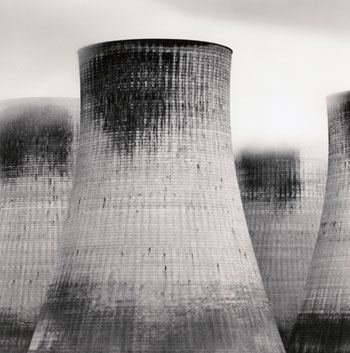
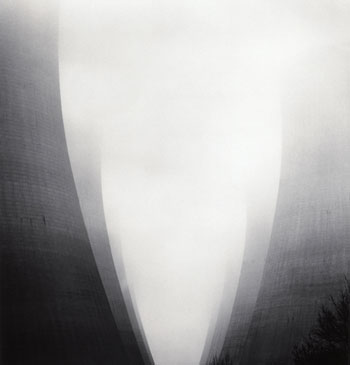


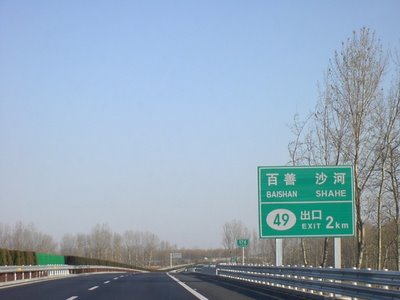
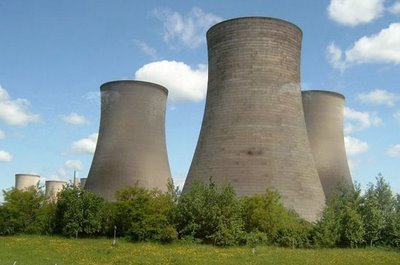



 [Images:
[Images:  (Thanks to
(Thanks to 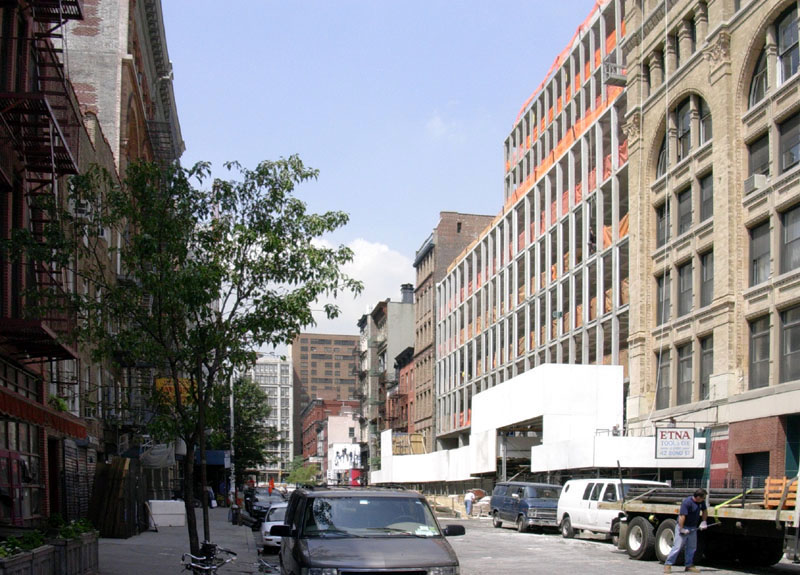
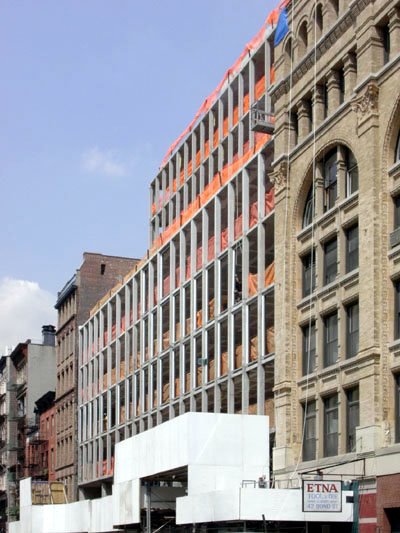
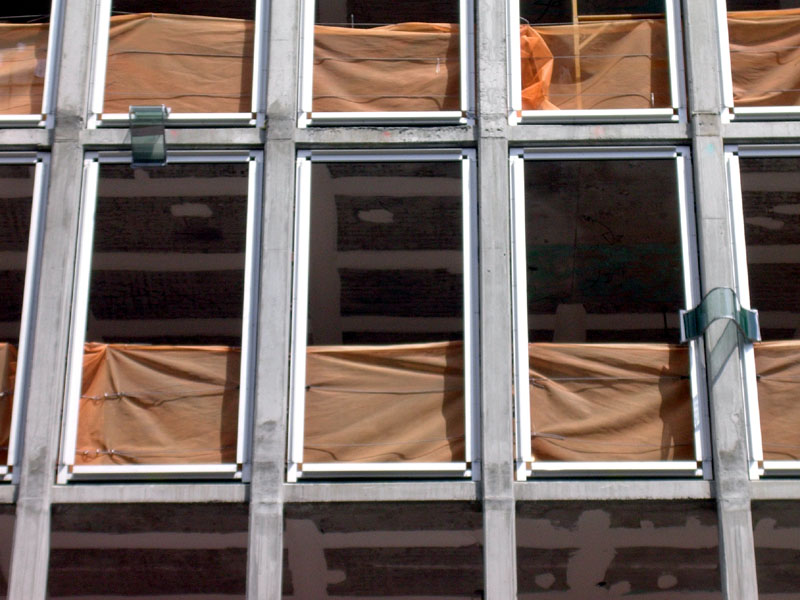
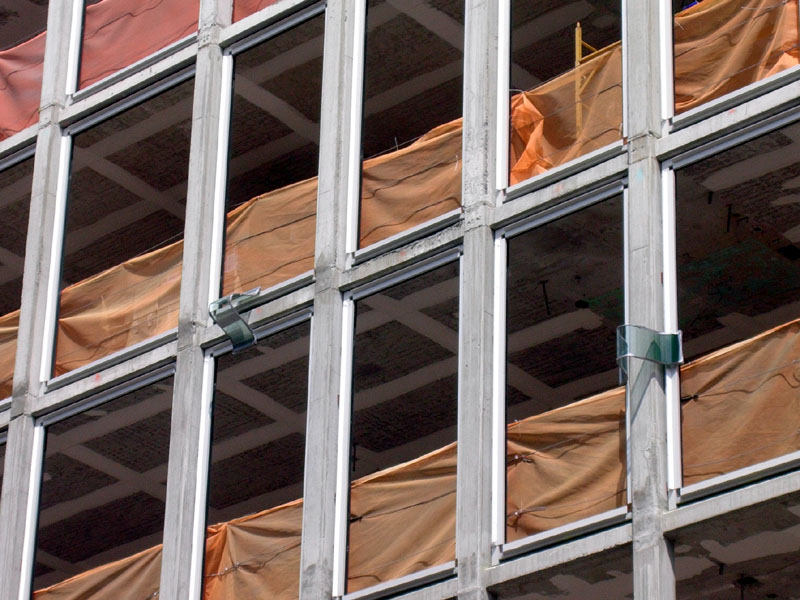
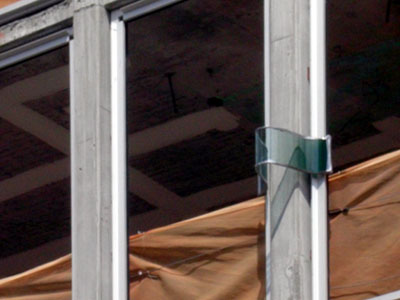
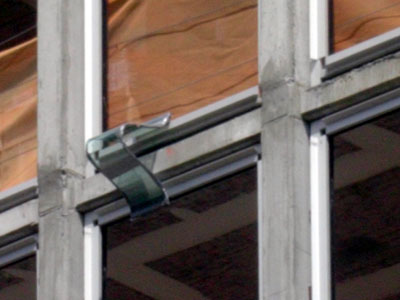
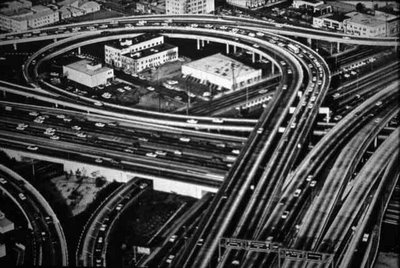 [Image: Octopus L.A. For the more satellite-inclined, check out
[Image: Octopus L.A. For the more satellite-inclined, check out 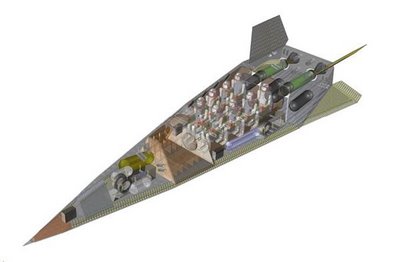


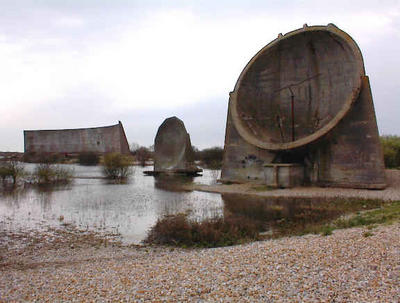

 "Plug up the Hudson river at both ends of Manhattan... divert that body of water into the Harlem river so that it might flow out into the East river and down to the Atlantic ocean... pump out the water from the area of the Hudson which has been dammed off… fill in that space... ultimately connecting the Island of Manhattan with the mainland of New Jersey... and you have the world’s eighth wonder – the reconstruction of Manhattan!"
"Plug up the Hudson river at both ends of Manhattan... divert that body of water into the Harlem river so that it might flow out into the East river and down to the Atlantic ocean... pump out the water from the area of the Hudson which has been dammed off… fill in that space... ultimately connecting the Island of Manhattan with the mainland of New Jersey... and you have the world’s eighth wonder – the reconstruction of Manhattan!" Quoting at length:
Quoting at length: